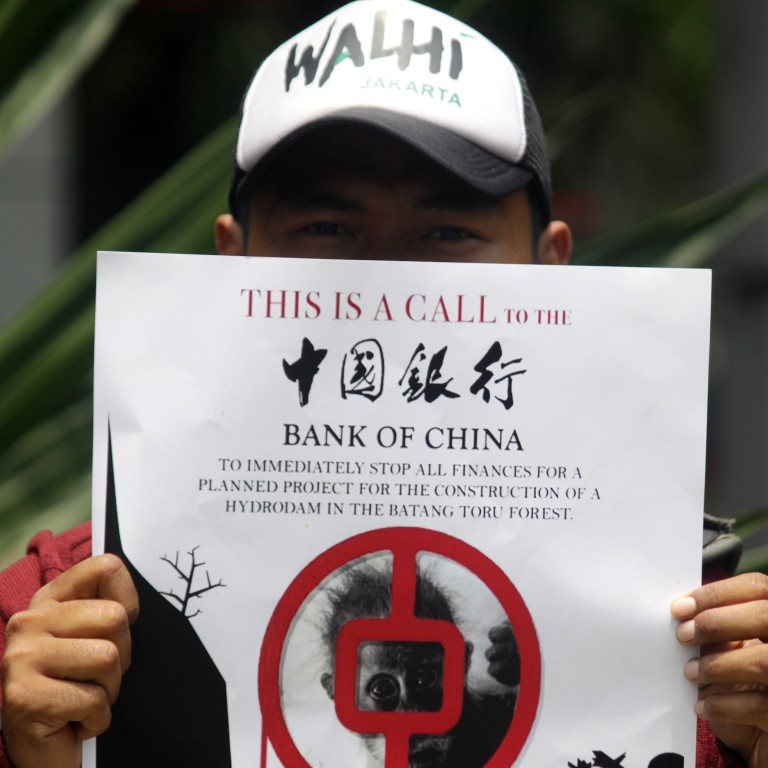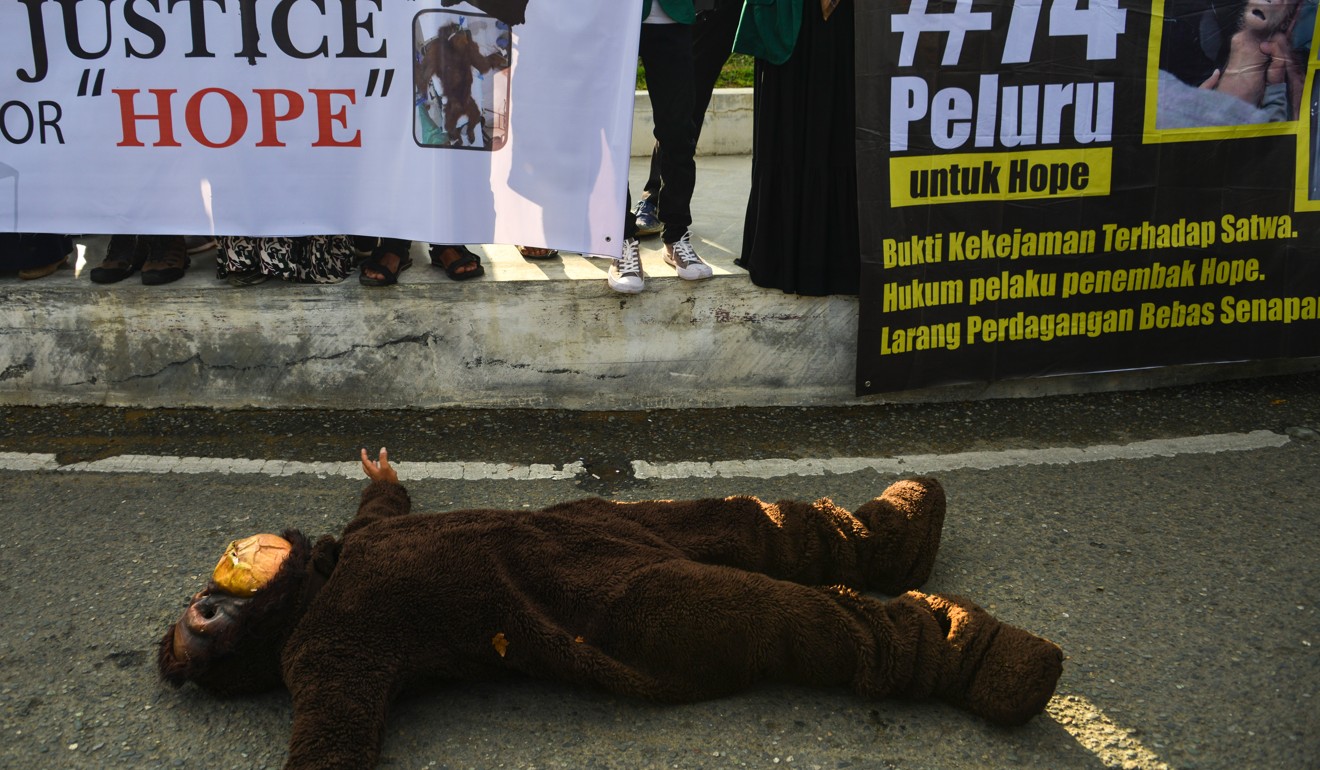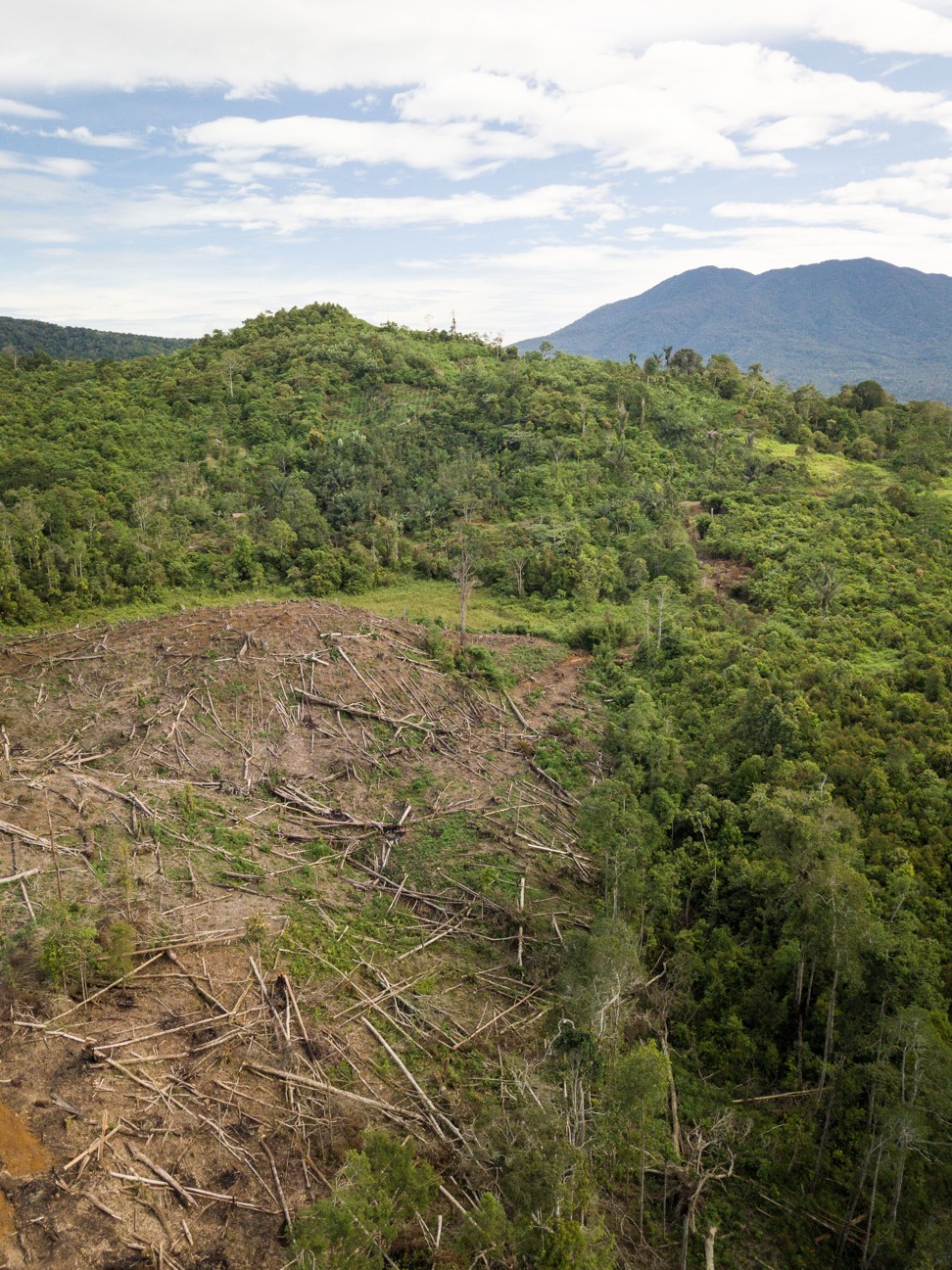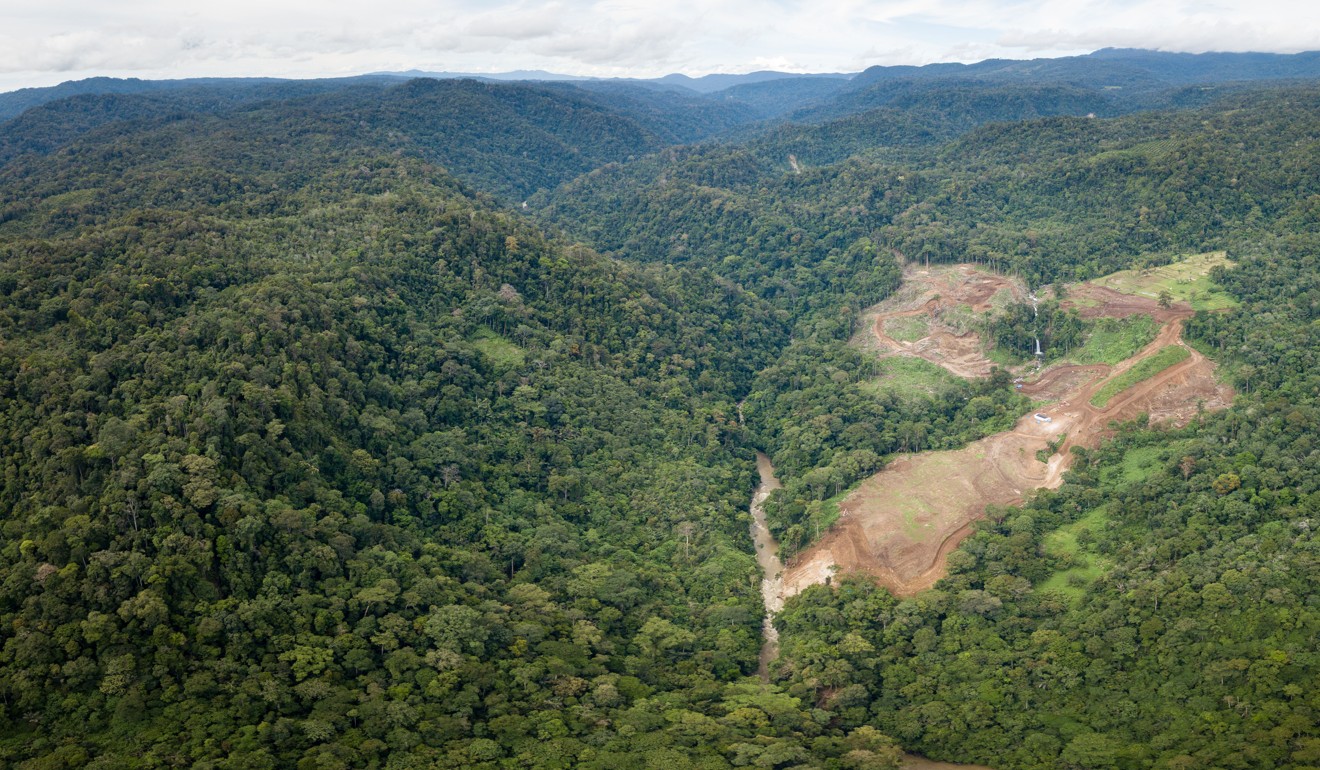
Green activists vow to keep fighting Indonesia dam project that could wipe out rare ape
- A hydroelectric scheme in North Sumatra threatens the tropical rainforest habitat of the Tapanuli orangutan, the world’s rarest great ape
- Activists say scheme financier Bank of China turned a blind eye to the threat to the orangutans, ignoring China’s own green development guidelines
Surrounded by dense rainforest, as many as 50 protesters bore banners and placards reading “Damn the Dam!” and “Destroying the forest means destroying lives”. Several of them climbed into the forest canopy above and continued their protest from on high.
They were demonstrating against the controversial Batang Toru dam project, a 510-megawatt hydroelectric project being developed by a Chinese-Indonesian consortium in Indonesia’s North Sumatra province, and broadly considered to be part of the “Belt and Road Initiative”, China’s plan to grow global trade through infrastructure investment.
The protest, at the end of February and one of a number that have since been held farther afield, appears to have fallen on deaf ears, but campaigners are not about to give up and court action is still ongoing.
The US$1.5 billion project is being developed by China’s state-owned Sinohydro and Indonesia’s North Sumatra Hydro Energy. With its roads, tunnels and high voltage towers, environmental groups say it will have an irreversible negative impact on the Batang Toru Ecosystem – a tropical rainforest habitat.

They say it will almost certainly mean extinction for the Tapanuli orangutan, a great ape that was only recently recognised as a distinct species and is unique to the area. Experts say there are only about 800 individuals left, making it the rarest great ape species in the world.
Indonesia’s largest environmental organisation, Walhi, took the case to court on March 4, suing the governor of North Sumatra province for issuing construction permits based on what the group says was a deeply flawed environmental impact assessment. Major risk factors, including earthquakes, were not properly accounted for in the documents, according to Dana Prima Tarigan, the director of Walhi’s North Sumatra chapter.

One scientist, Onrizal Onrizal, has further alleged that his signature was forged on one of the assessments. The forestry researcher was approached in 2013 by Global Inter Sistem, a consultant that North Sumatra Hydro Energy had hired to carry out the environmental impact assessment. Onrizal says that in the report he submitted, he stated that there were not only orangutans in the surveyed area, but also the critically endangered Sumatran tiger.
Yet according to Onrizal, the final document handed over to the authorities contained no mention of the rare mammals. In spite of the major revision, made allegedly without Onrizal’s knowledge, the assessment bore his signature and even a copy of his university diploma.
The Medan State Administrative Court in North Sumatra rejected Walhi’s case, however, with the judges finding that permits for the project were issued according to the regulations. The group is now seeking to appeal against the court’s decision. Work on the plant is proceeding, and it is expected to go into operation in 2022.

While it lies near an area of protected forest, the dam is located in a zone that is not safeguarded. As a result the developers were able to secure the necessary permits and get broad government support. At the same time, it has complicated the argument for critics of the dam, who must demonstrate that the area is a vital part of the Tapanuli orangutan’s habitat.
“Orangutans don’t know which parts of the forest are protected and which aren’t. This is a continuous habitat where orangutans can move around,” says Graham Usher, a land protection specialist who has been involved in mapping and land assessment projects in North Sumatra.
The existence of the Tapanuli orangutan, including the discovery that it represents a genetically different species from two other orangutans found in Indonesia, was only confirmed in 2017, after permits and concessions for the project had already been given the green light. The Indonesian government has acknowledged the presence of the orangutans at Batang Toru, but an assessment by the Ministry of Environment and Forestry concluded that the dam presents no threat to the apes.
“The Batang Toru dam site is not the primary habitat for orangutans. The primary habitat for orangutans is in the forest. We have found orangutans to live mostly in elevations of above 600 metres,” the ministry has said.

It has also suggested that the orangutans could be relocated, and that arboreal bridges could be built to help the apes negotiate their way around the area. This is a view that environmental groups such as Walhi and orangutan experts including Erik Meijaard regard as “absolutely unrealistic”.
“The ministry has been involved in population modelling, and should know that separating [the Tapanuli orangutan population] will endanger them. It’s either the dam, or the orangutan – you can’t have both,” the Dutch biologist says.
Not only will the animals be restricted in their movements by the presence of people and infrastructure, the roads leading to the dam site and into the forest will bring many unintended consequences, including more illegal hunting, Meijaard insists. With only 800 individuals left, any additional stress factors could lead to extinction, he adds.
Walhi’s Dana agrees that plans to manage the orangutan population by moving the apes or building bridges are not likely to work. “I’ve never heard of or read about any such case where that has been a long-term viable solution,” he says.

In their efforts to halt the Batang Toru dam project, campaigners have also criticised the role of Chinese money in the development, which is being supported by Bank of China. The dam is regarded as part of China’s “Belt and Road Initiative”, a worldwide infrastructure development strategy launched by Beijing to promote economic cooperation, which critics claim is saddling countries with excessive levels of debt.
Environmental groups say that providing loans and expertise for environmentally damaging projects violates the Belt and Road’s green development guidelines.
“China has been very clear that the Belt and Road should be green,” says Tom Baxter, a former Greenpeace activist who is now part of the environmental news portal China Dialogue.
“[President] Xi Jinping himself has stated numerous times that [Belt and Road] must be a green initiative [ …] China’s chief climate negotiator Xie Zhenhua stated that overseas infrastructure projects with Chinese involvement must abide by the highest standards, going above and beyond just the local standards,” Baxter says.

However, he concludes, there is still little enforcement of these guidelines. Dana says Walhi has emailed the Bank of China, one of the dam’s financial backers, asking for closer attention to be paid to the situation at Batang Toru.
“The Bank of China said it would conduct an internal investigation, but has never made the results public,” Dana says. “After the email, North Sumatra Hydro Energy started pushing out posts on its Facebook page, where they portrayed the project as a green development.”
On February 28, Walhi issued an open letter to the bank, addressed to chairman Chen Siqing.
“Despite many attempts to convey our concerns since May 2018, we still have not received a meaningful response from Bank of China,” it says.

“On behalf of the local communities and in support of saving the many endangered species found only in this region, we respectfully ask that Bank of China please suspend, cancel or require immediate repayment of any funds disbursed to its client, [North Sumatra Hydro Energy], or other associated project developers, such as Sinohydro.”
An alliance of NGOs staged a protest in front of the Bank of China office in Jakarta on March 1, an event which was also attended by pro-dam supporters, who argue the development is necessary to achieve Indonesia’s clean energy goals and that it will bring money and jobs to area.
Three days later, Bank of China issued a statement saying it noted environmentalists’ concerns and attached great importance to corporate social responsibility in its global operations.

“Bank of China will evaluate the project very carefully and make prudent decisions by duly considering the promotion of green finance, the fulfilment of social responsibility as well as the adherence to commercial principles,” the statement reads.
For environmental campaigners in Indonesia, time may be running out to save the Tapanuli orangutan. Yet Walhi and their allies say they will continue to resist the development.
